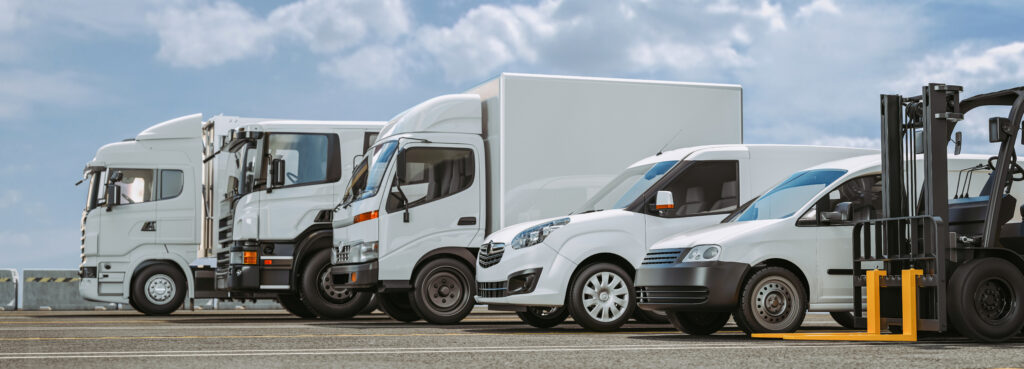
When it comes to the logistics of transporting cargo, size does matter. Much more than bigger is better or the more the merrier, the right size for the job is paramount in every instance. After all, there is little utility to be gained in bringing a 24 ft box truck to carry just a few cardboard cartons from place to place. As commercial vehicles, its primary function is to fulfill the business need of transporting items to different destinations. The job could entail moving a variety of items – some perishable or fragile, others much less so. Consequently, commercial vehicles come in a wide variety of designs to serve specific needs or a combination of requirements. There are trucks and lorries that have cargo beds that are opened to the elements, some that are partially covered with a canopy and there are others that are fully enclosed box trucks. With a bewildering array of configurations to choose from, getting acquainted with what is available makes picking one just right for the job a lot easier.
Lorry and Truck Size Guide
The word truck and lorry are both common terms in the haulage industry and are often used interchangeably to refer to Heavy Goods Vehicles (HGVs) and certain models of Light Goods Vehicles (LGVs) like the Toyota Hiace, especially when in a flatbed configuration.
In Singapore, commercial vehicles are grouped into 4 categories:
- Goods-cum-Passenger Vehicles (GPVs) are the smallest class of commercial vehicles reaching an allowable maximum 5,000kg in maximum laden weight (MLW). As its name suggests, GPVs are permitted to carry both goods and passengers.
- Light Goods Vehicles (LGVs) are allowed an MLW of up to 3,500kg for carrying goods
- Heavy Goods Vehicles (HGVs) fall in the range of 3,501 kg to 16,000kg in MLW.
- Very Heavy Goods Vehicles (VHGVs) are vehicles with MLW of more than 16,000kg.
What is the difference?
Weight is one classification used to describe the dimension of commercial vehicles but the other common method is length. For instance, some standard sizes include the 10ft lorry, 14ft lorry and 24ft truck.
The 2 main factors to consider are budget and shifting when deciding which to buy or rent. Using a truck with a capacity larger than what is needed costs more to buy or rent, uses more fuel and is restricted in terms of parking or access. This might mean that more man power is required to move items to where the vehicle is parked. Shifting within a truck that has too much unused space can also be a problem, especially if the items placed inside are fragile and cannot be secured properly. Often, this means more time needed for stuffing – the process by which goods are loaded – and having to purchase additional packing material or cushioning.
A good way to roughly determine which size to get is from volume calculators provided online. Generally speaking, a 10 ft truck is the minimum needed for a studio apartment. A 2-room apartment might get away with a 14 ft truck but a 5-room home would necessitate the use of a 24 ft truck. Of course, multiple trips can be made instead of a single journey but that all adds up in time and transport costs.
Aside from size, each class of commercial vehicles possess different attributes, perform different functions, attract different taxes and have their own regulations.
Configurations For Your Box Truck Rental
The right tool for the job ensures that the assignment can be completed compently. There are several popular makes and models that dominate this market segment, such as the Toyota Dyna or Hiace, the Nissan NV series, Isuzu and Kia. European brands such as MAN, Scania, Volkswagen and Volvo are also favourite choices.
The most common depiction of a lorry or truck is the one that features a no-frills cargo bed behind the driver’s cabin. It is either completely open, without a canopy, or is semi-covered with scaffolding on both sides that support a metal or tarpaulin roof to keep out the elements. These are used to quickly load goods, equipment or workers and to facilitate the quick unloading of the same. As it is not completely protected from the environment, it is most suitable for transportation over short distances.
For transporting large volumes of building materials like soil, gravel or mineral ores a dump truck is the most appropriate choice as it features a large cargo area similar to a box truck. However, the most important feature are hydraulic arms that can tilt the cargo compartment and quickly empty its contents by pouring it onto the ground or another receptacle.
The box truck is another often seen configuration. As its name suggests, it sports a fully enclosed box as its cargo area. This provides more protection for its contents and also allows for it to be climate controlled, such as a freezer truck or “reefer” to deliver fresh produce. Other handy options include mechanised tailgates that can act as a forklift which helps with loading. There are also non-mechanised versions such as a fold out ramp that allows trolleys into the cargo area, thus eliminating the need to physically lift goods by hand onto the truck.
With a wide array of styles and sizes to choose from, box truck rentals can be tricky to get right but a good place to start is to fully understand the nature of the task at hand. In this way, an optimal balance of budget, capacity and functionality can be achieved when deciding on that big investment into a commercial vehicle. Another sound choice to avoid a wrong investment is to rent or lease a commercial vehicle at a reputable leasing company. In this way, a business owner can try out several different options or do a short term rental while figuring which vehicle is the best choice for the business.




